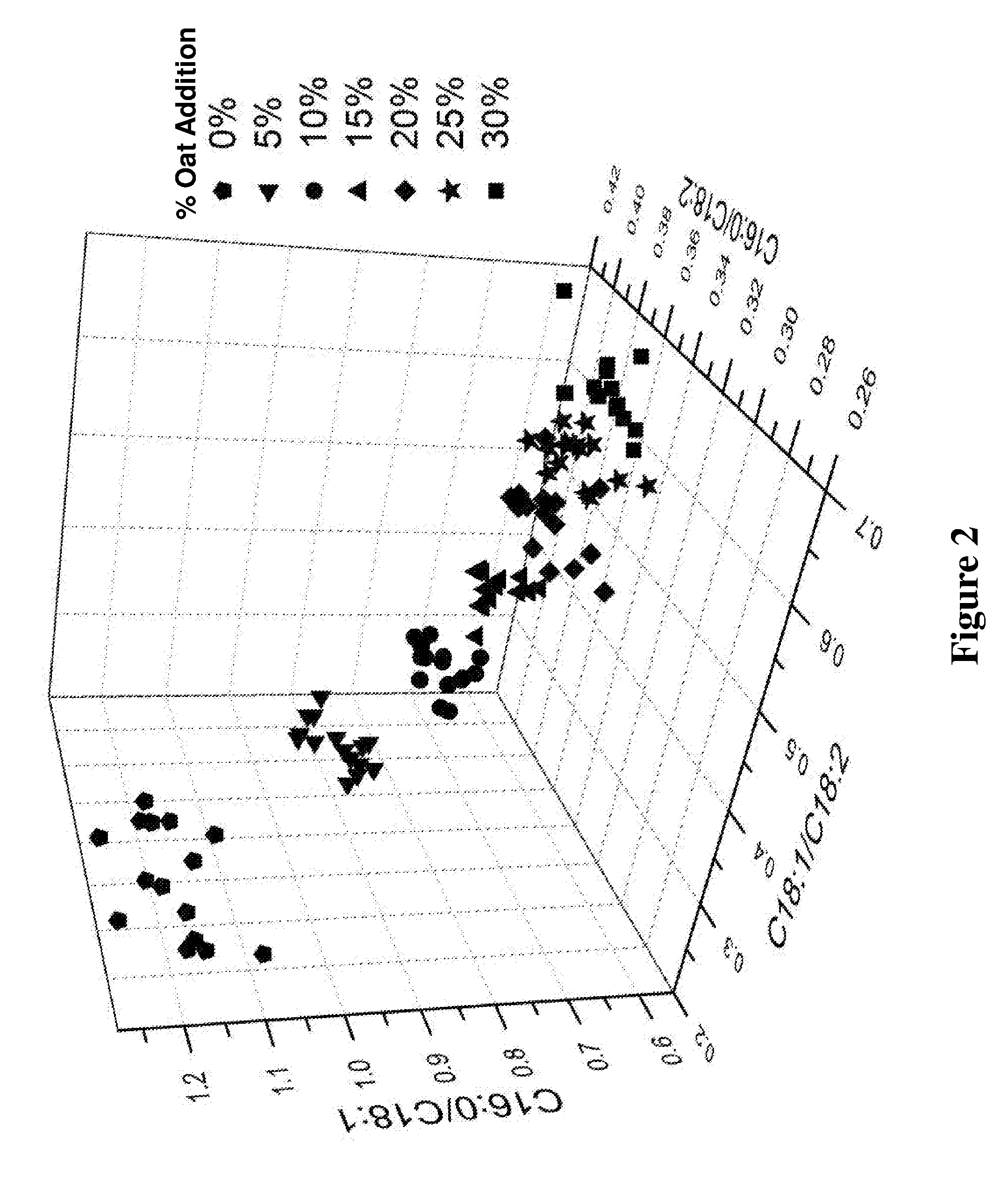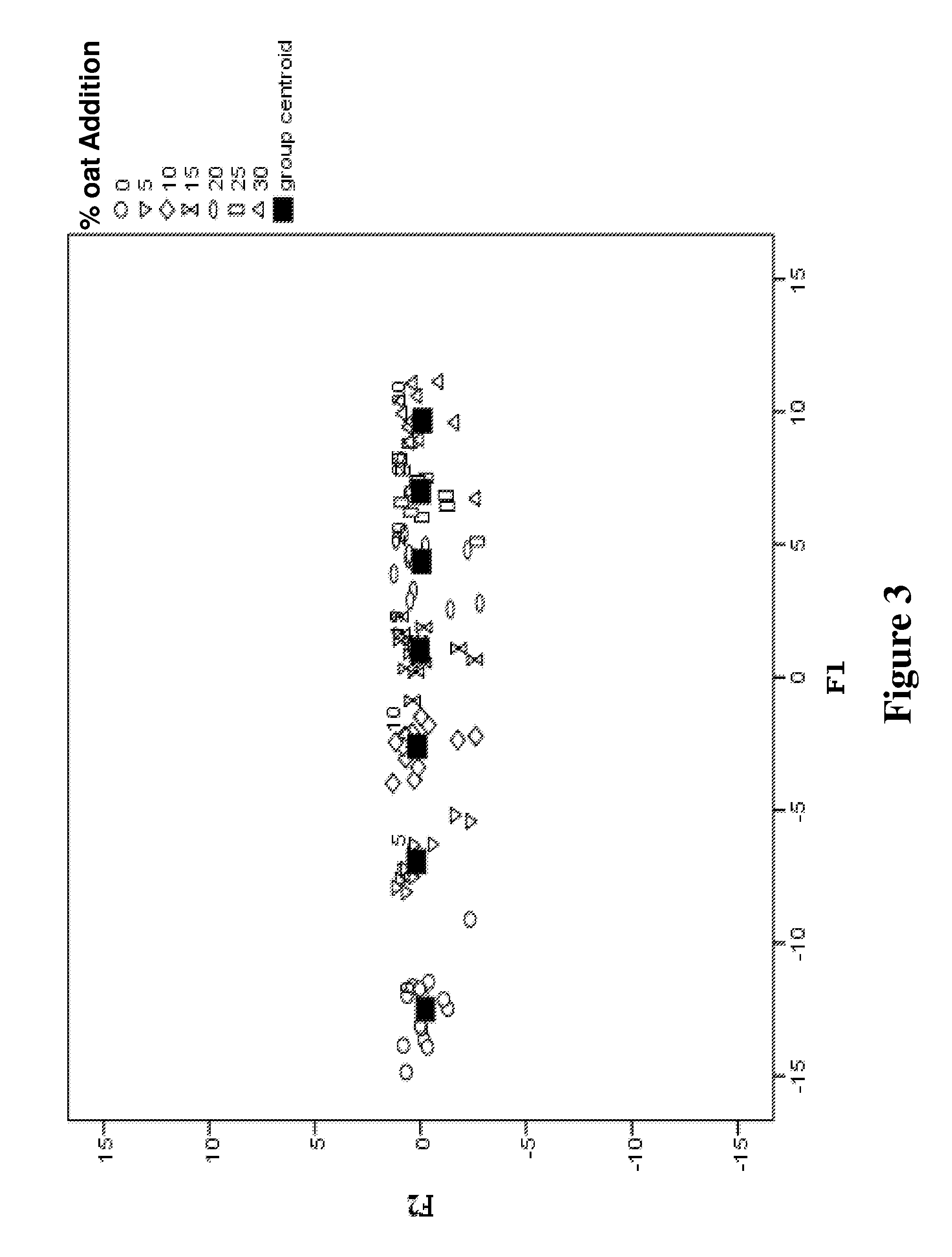Method for determining the amount of oat flour addition in compound flours and noodles
- Summary
- Abstract
- Description
- Claims
- Application Information
AI Technical Summary
Benefits of technology
Problems solved by technology
Method used
Image
Examples
example 1
Grouping and Pairing of Oat and Wheat Varieties According to BIBD
[0055]In order to make the quantitative model represent as much sample information as possible without expanding the sample size to impact test efficiency, the present invention uses the BIBD method to select samples within each group to have a good homogeneity, a good balance among groups and a good statistical coverage.
[0056]Firstly, 35 oat samples were selected from 48 different varieties that are from 10 origins, and 35 wheat samples were selected from 40 varieties that are from 6 origins using the stratified random sampling method. In order to balance the diversity of varieties and origins, oat and wheat samples were selected by a randomized process. 35 pairs of oat and wheat were randomly matched to form 35 groups and the group number of these 35 groups were randomized to balance the diversity. Seven different levels of oat addition were randomly distributed among the groups, and each group has three treatments. ...
example 2
Analysis of Fatty Acids in Oat Flour and Wheat Flour
Pretreatment of Samples
[0058]The impurities in oat seeds were removed, and the oat seeds were smashed by cyclone mill and 40-mesh sieved, thus obtaining oat flour. To prepare wheat flour, wheat seeds were smashed and 120-mesh sieved after bran removal similar to industrial wheat flour production process.
Extraction of Oil Composition from Flours
[0059]The oil composition of oat and wheat flours were extracted by Soxhlet method according to GB / T5512-2008.
Methyl Esterification of Fatty Acids
[0060]20 mg extracted oil sample was added into a 10 ml test tube, and 2 ml 0.5 mol / l freshly made NaOH—CH3OH solution was added, and then the mixture was heated at 65° C. in a water bath until oil beads were completely dissolved (about 30 mins, samples were vortexed 2 to 3 times during the reaction). Let the mixture stand for cooling. 2 mL freshly formulated 25% BF3—CH3OH solution was added to the mixture and heated at 65° C. in a water bath for 20...
example 3
Determination of Fatty Acids Using Gas Chromatography
Precision Experiment
[0068]The same sample was pretreated as described in Example 2 and was repeated for 6 times of continuous injections in gas chromatography analysis. The results showed that the characteristic peaks of retention time RSD were less than 0.892%, peak areas RSD were less than 3.069%. These results showed a high accuracy of gas chromatography analysis.
Repeatability Experiment
[0069]Six solutions of the same sample were prepared and analyzed as described in Example 2. The results showed that the characteristic peaks of retention time RSD were less than 0.764%, peak area RSD were less than 4.249%. These results showed a good repeatability of gas chromatography analysis.
Stability Experiment
[0070]The same samples, which were treated as described in Example 2, were sealed and stored at −4° C. After 0 h, 4 h, 8 h, 12 h, 16 h, 20 h and 24 h, samples were analyzed using gas chromatography as described in Example 2. The resul...
PUM
 Login to View More
Login to View More Abstract
Description
Claims
Application Information
 Login to View More
Login to View More - R&D
- Intellectual Property
- Life Sciences
- Materials
- Tech Scout
- Unparalleled Data Quality
- Higher Quality Content
- 60% Fewer Hallucinations
Browse by: Latest US Patents, China's latest patents, Technical Efficacy Thesaurus, Application Domain, Technology Topic, Popular Technical Reports.
© 2025 PatSnap. All rights reserved.Legal|Privacy policy|Modern Slavery Act Transparency Statement|Sitemap|About US| Contact US: help@patsnap.com



